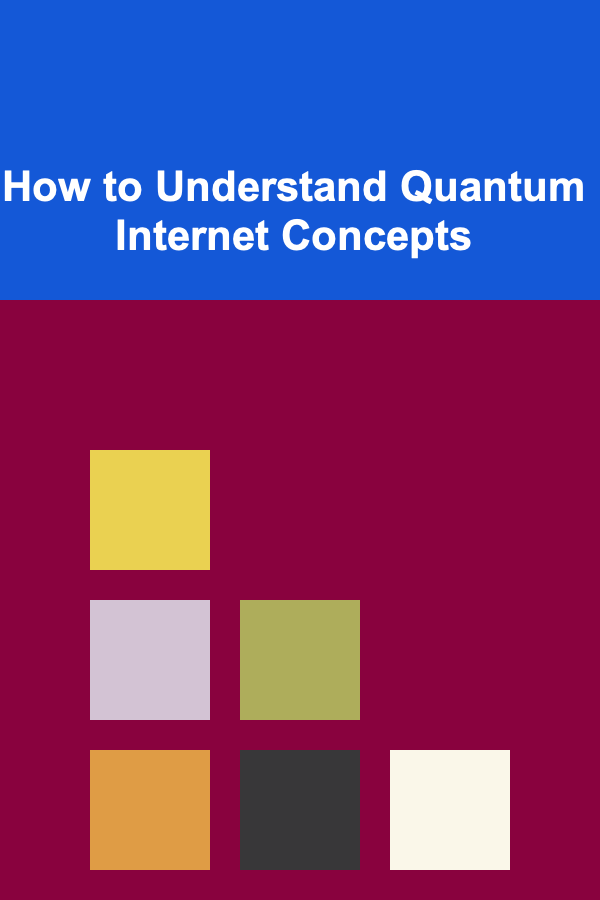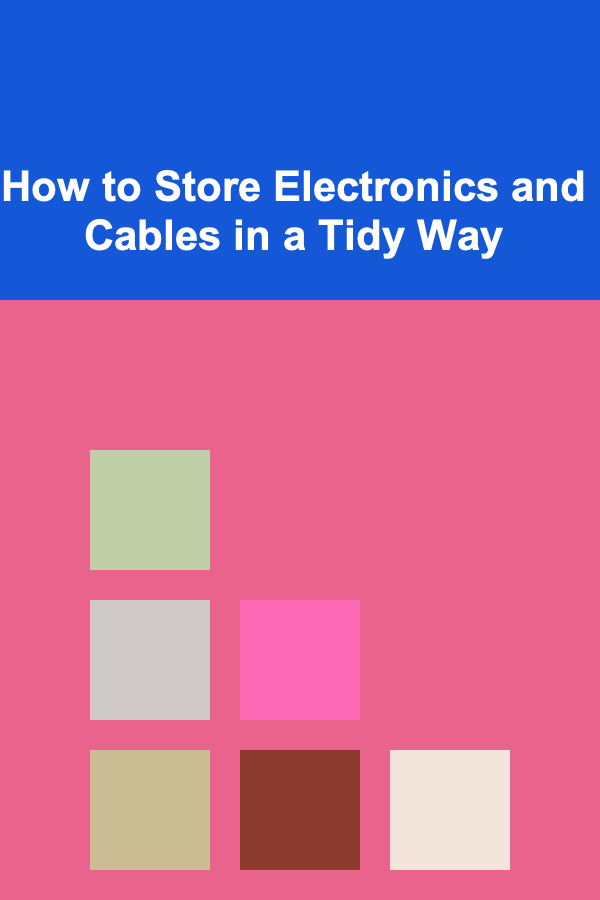
How to Understand Quantum Internet Concepts
ebook include PDF & Audio bundle (Micro Guide)
$12.99$7.99
Limited Time Offer! Order within the next:

The advent of quantum technologies has ignited an era of exploration in the realm of computing, communication, and cryptography. Among these, the concept of the quantum internet stands out as one of the most revolutionary ideas, promising to redefine how we communicate, share information, and secure data. Understanding the quantum internet requires a deep dive into several core principles of quantum mechanics, along with how they apply to communication networks. In this article, we will explore the basic principles behind the quantum internet, the technologies that enable it, and the potential implications of its widespread use.
The Quantum Internet: An Introduction
The quantum internet is a network designed to leverage the principles of quantum mechanics to enable communication between quantum computers and other quantum devices. Unlike the classical internet, which relies on bits to transmit data, the quantum internet will rely on quantum bits or qubits. This shift has profound implications not only for how we share information but also for the security, speed, and efficiency of our networks.
At its core, quantum mechanics allows for phenomena that don't exist in classical physics, such as quantum entanglement , quantum superposition , and quantum tunneling. These principles enable the quantum internet to offer capabilities far beyond what is possible with today's classical internet.
Key Principles Behind the Quantum Internet
To better understand the quantum internet, let's look at some of the fundamental quantum concepts that enable it:
Quantum Superposition
In classical computing, a bit can exist in one of two states: 0 or 1. Quantum computing, on the other hand, uses qubits, which can exist in a state that is a combination (or superposition) of both 0 and 1 at the same time. This allows quantum systems to perform computations much more efficiently, handling complex data and computations in parallel rather than sequentially.
Quantum Entanglement
One of the most famous and mind-bending aspects of quantum mechanics is entanglement . When two quantum particles, such as photons or electrons, become entangled, their states become interdependent. This means that changing the state of one particle instantly affects the state of the other, even if they are separated by vast distances. This principle is at the heart of quantum communication protocols, allowing for instantaneous transmission of information, or quantum teleportation.
Quantum Tunneling
Quantum tunneling refers to the phenomenon where particles can pass through barriers that would otherwise be insurmountable in classical physics. In communication terms, this concept could be applied to improve data transmission across networks, as particles might tunnel through the barriers of traditional network limits.
Quantum Internet vs Classical Internet
The classical internet is built on the foundation of transmitting bits through traditional physical mediums like optical fibers, copper wires, and wireless communication technologies. The quantum internet, however, will utilize quantum states to transmit qubits, which can be in a superposition of multiple states, enabling exponentially faster and more secure communication.
- Speed and Efficiency: The quantum internet could potentially achieve far faster speeds than classical networks due to quantum parallelism, which allows qubits to carry more information simultaneously.
- Security : The concept of quantum encryption, most notably quantum key distribution (QKD), promises an unbreakable method of securing communications. If someone attempts to intercept a quantum message, the quantum state will collapse, revealing the presence of the eavesdropper.
The Building Blocks of the Quantum Internet
Creating a quantum internet requires new hardware, protocols, and infrastructure. The challenge lies in controlling qubits over long distances, as well as overcoming issues like quantum decoherence, which causes quantum systems to lose their quantum properties due to interaction with the environment.
Quantum Computers and Quantum Communication
At the heart of the quantum internet are quantum computers and quantum communication systems. Quantum computers are capable of solving problems that are infeasible for classical computers, such as factoring large numbers or simulating quantum physical processes.
Quantum communication involves the transmission of quantum information across a network. This can be achieved through various protocols and technologies, the most important of which include:
Quantum Key Distribution (QKD)
Quantum Key Distribution (QKD) is the most well-known application of quantum communication. QKD allows two parties to generate a shared, secret key for encrypting and decrypting messages. The key is generated through quantum processes, making it virtually impossible to intercept without detection.
In QKD, quantum bits are transmitted using entangled photons. If someone tries to intercept the communication, the quantum state will collapse, and the intended recipients will know that the key has been compromised. This provides a level of security that is not possible in classical systems.
Quantum Repeaters
Quantum repeaters are devices that can help extend the range of quantum communication systems. Since quantum states are fragile and degrade over long distances, a key challenge in building a quantum internet is maintaining the integrity of the quantum information over long distances. Quantum repeaters function by receiving, amplifying, and retransmitting quantum signals, allowing them to be transmitted across extended distances without losing their quantum properties.
Entanglement Swapping
Entanglement swapping is a technique that enables entanglement between two distant quantum systems without directly interacting with them. This is crucial for creating long-distance quantum networks. By swapping entanglement, a quantum state can be teleported across large distances, opening the door for quantum communication to span continents and even the globe.
The Role of Photons in Quantum Communication
Photons play a crucial role in quantum communication. Photons are the most common carriers of quantum information, as they can be easily manipulated, travel long distances, and are compatible with existing communication infrastructure, such as optical fiber networks. Using photons, quantum information can be encoded into quantum states like polarization or time-bin encoding, which are then transmitted over optical fibers.
However, there are challenges in controlling photons, especially over long distances. For instance, photons can lose their coherence when traveling through fiber optic cables, and they can be scattered, which limits the effective range of quantum communication. Advances in photon sources, detectors, and optical fibers are needed to overcome these limitations.
Quantum Internet Architectures and Protocols
To enable widespread deployment of quantum communication systems, several architectural and protocol challenges must be addressed. Unlike classical networks, quantum communication requires specialized infrastructure to maintain the quantum states of qubits during transmission.
Quantum Networks: Entanglement-Based Architectures
Quantum networks will rely heavily on entanglement-based architectures. In such systems, nodes in the network will be linked through quantum entanglement, forming the backbone of the quantum internet. Each node will be able to send and receive quantum information to and from other nodes by creating, maintaining, and swapping entangled states.
Quantum Internet Protocols
Several protocols are being developed to ensure the proper functioning of the quantum internet. These include:
- Quantum Teleportation: This protocol allows quantum information to be transferred between two distant locations without moving the particles themselves. Instead, the quantum state is transferred by manipulating entanglement and using classical communication to exchange information.
- Quantum Error Correction : Quantum systems are highly sensitive to noise and disturbances from their environment. Quantum error correction is essential to ensure the accuracy and reliability of quantum communication. Codes like the surface code or Shor code are being developed to protect quantum information from errors during transmission.
- Quantum Internet Routing: Routing in quantum networks involves the transfer of quantum information across multiple nodes. Quantum routers will need to direct entangled states to appropriate destinations while managing the unique challenges of maintaining quantum coherence over long distances.
The Challenges of Building a Quantum Internet
Building the quantum internet is not without its challenges. There are significant obstacles in terms of hardware, scalability, and infrastructure.
1. Quantum Decoherence
Quantum systems are highly sensitive to their environment. When qubits interact with external noise or uncontrolled factors, they lose their quantum properties---a phenomenon known as quantum decoherence. This makes long-term storage and transmission of quantum information a complex task. Research is ongoing to develop better qubit isolation techniques and error-correcting algorithms.
2. Scalability
One of the major hurdles to building a global quantum internet is scalability. Quantum networks require the establishment of thousands, if not millions, of quantum nodes connected by quantum channels. Current quantum technology can only manage small-scale quantum communication, and scaling up to a worldwide system is a monumental challenge.
3. Quantum Hardware and Infrastructure
The hardware needed to build quantum networks is still in the early stages of development. Quantum computers, repeaters, and other quantum devices need to be refined and made practical for widespread use. This involves improving the efficiency of quantum hardware, such as quantum gates, photon detectors, and entanglement sources.
4. Integration with Classical Networks
For the quantum internet to coexist with the existing classical internet, seamless integration is necessary. This will involve hybrid systems that combine the best aspects of quantum and classical communication. For instance, quantum networks may operate alongside classical networks for tasks like encryption, while quantum key distribution ensures secure communication.
Future Implications of the Quantum Internet
The quantum internet holds immense potential. Here are some of the key ways it could transform the world:
1. Unbreakable Security
Quantum encryption promises unbreakable communication, making it impossible for adversaries to eavesdrop without detection. This could fundamentally change fields like banking, national security, and online privacy.
2. Faster Communication
Due to quantum entanglement and superposition, quantum networks could enable faster communication, surpassing the limitations of classical systems. This could revolutionize areas like global communications, telemedicine, and remote collaboration.
3. Revolutionizing Computing
The quantum internet will enable quantum computers to communicate with one another and share processing power, enhancing distributed computing tasks. This could lead to breakthroughs in fields like artificial intelligence, drug discovery, and climate modeling.
4. Impact on Cryptography and Privacy
Quantum computing and quantum key distribution will fundamentally change the landscape of cryptography. Current encryption methods may become obsolete, but new quantum-based cryptography methods will be created to ensure privacy and security in the quantum era.
Conclusion
The quantum internet represents the next great leap in communication technology. Although it is still in its infancy, it promises to revolutionize how we share information, secure data, and build global networks. By harnessing the power of quantum mechanics, the quantum internet could offer unprecedented security, efficiency, and speed. However, numerous technical challenges remain to be addressed before we can fully realize this vision. As research progresses, the quantum internet could become an integral part of our technological future, enabling new possibilities that were once considered science fiction.

How to Find Budget-Friendly Furniture That Looks Luxe
Read More
How to Organize and Clean Your Office Space at Home
Read More
How to Store Electronics and Cables in a Tidy Way
Read More
The Ultimate Guide to Lowering Mortgage Payments Through Refinancing
Read More
How to Prevent High Blood Pressure Naturally
Read More
How to Explore the Myths of the Silk Road Cultures
Read MoreOther Products

How to Find Budget-Friendly Furniture That Looks Luxe
Read More
How to Organize and Clean Your Office Space at Home
Read More
How to Store Electronics and Cables in a Tidy Way
Read More
The Ultimate Guide to Lowering Mortgage Payments Through Refinancing
Read More
How to Prevent High Blood Pressure Naturally
Read More